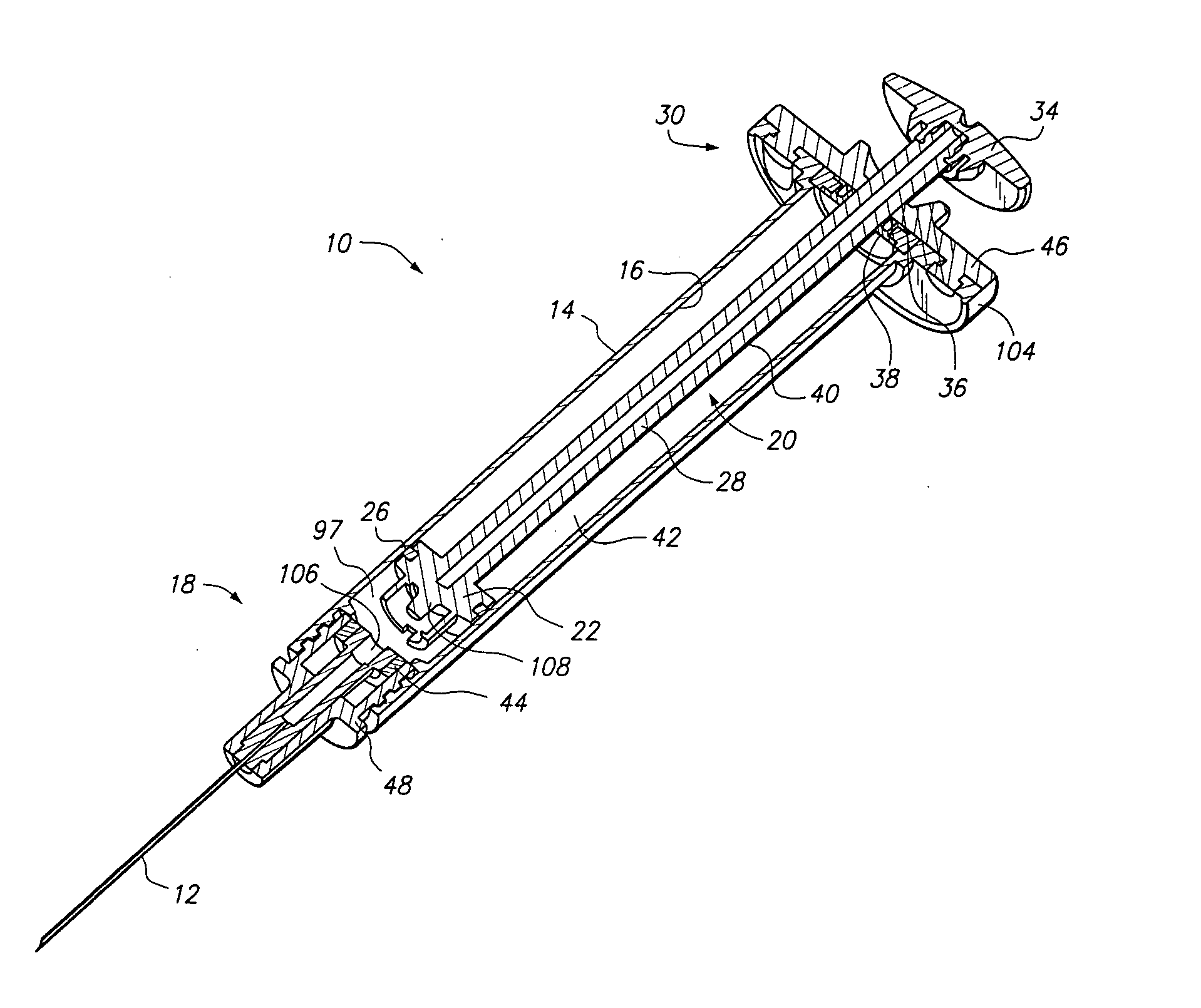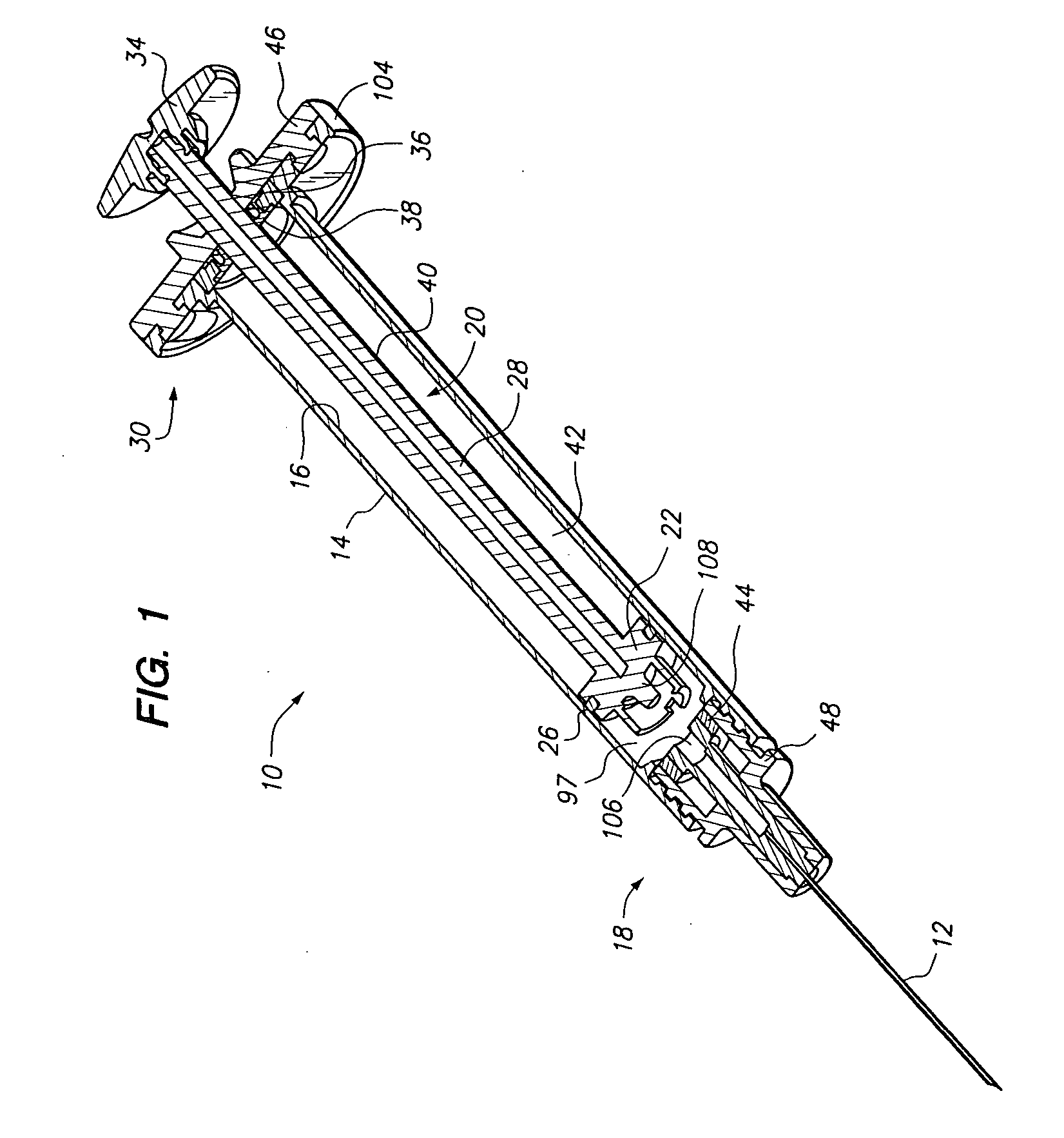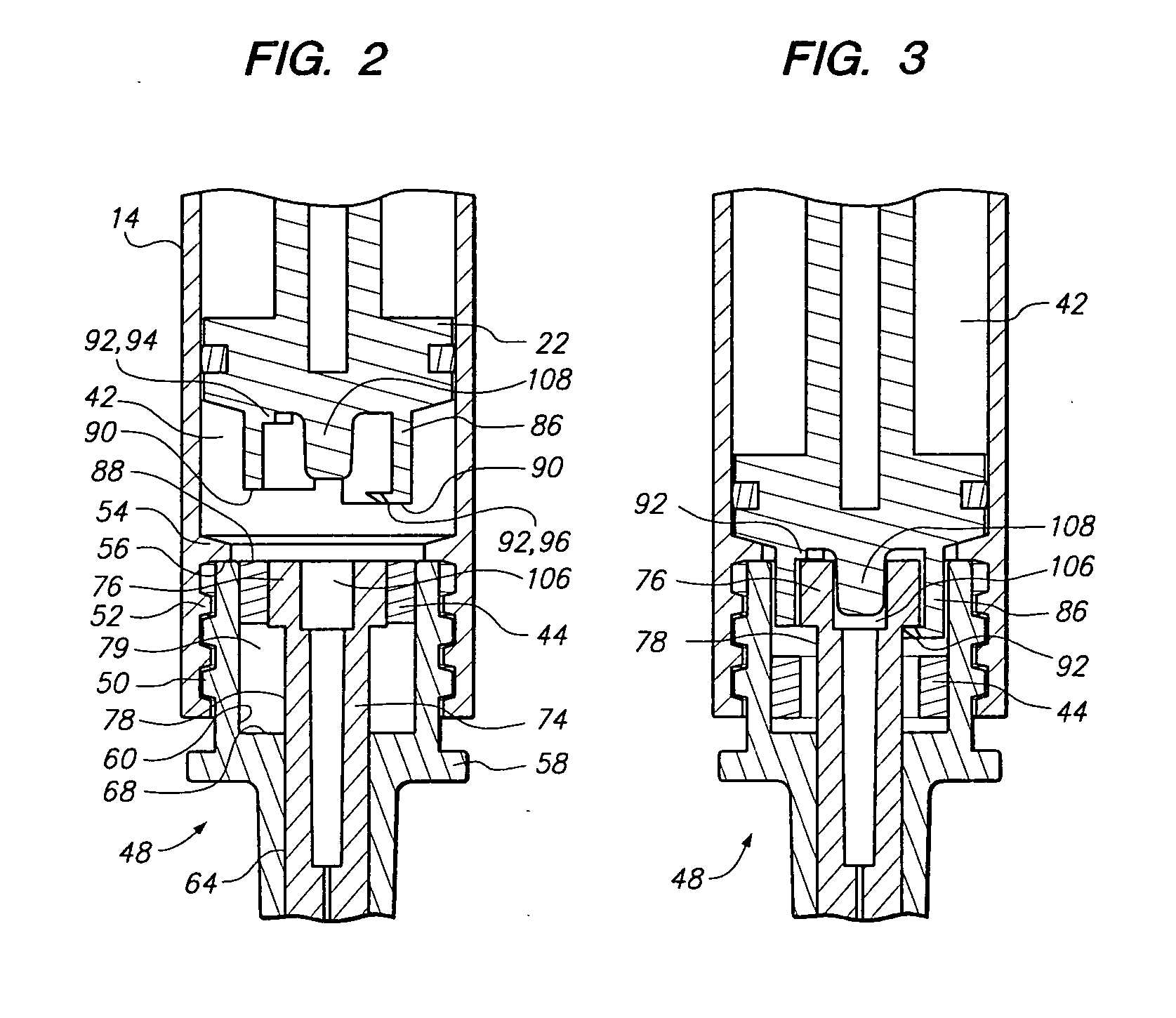Retractable safety syringe
a safety syringe and syringe technology, applied in the field of retractable safety syringes, can solve the problems of unreported the number of unreported cases is large, and the safety syringes that currently exist are criticized
- Summary
- Abstract
- Description
- Claims
- Application Information
AI Technical Summary
Benefits of technology
Problems solved by technology
Method used
Image
Examples
first embodiment
[0031] Generally, in relation to the syringe, the retracted position is when the piston 22 is closer to the proximal end of the body 14 compared to the distal end of the body. But, the retracted position may include the situation when the piston 22 does not contact the ferrule 74 and the piston is closer to the distal end of the body 14 compared to the proximal end of the body 14. The extended position (first extended position) is when the piston 22 contacts the ferrule 74 or is closely adjacent to the ferrule 74 but does not engage the ferrule 74 or displace the wedge element 44 off of an annular flange 76. The fully extended position (second extended position) is when the piston 22 contacts the ferrule 74 and does engage the ferrule 74. Also, at the fully extended position (second extended position), the wedge element 44 is displaced off of the annular flange 76 and about the landing 78.
[0032] The variable vacuum compartment 42 produces a retraction force which is used to withdraw...
second embodiment
[0046] The ferrule 152 of the second embodiment may also have an annular flange 158. A wedge element 160 may be frictionally engaged between the outer surface of the annular flange 158 and the inner surface 157 of the syringe body 156. The frictional engagement therebetween prevents the ferrule 152 and the needle 154 from being retracted into the syringe body 156 as the needle pierces the skin of the patient to administer the medication or as the needle 154 pierces the medication container to fill the variable fluid chamber 190 with medication.
[0047] A distally protruding annular ring 162 may be attached to the distal end of the piston 166. The annular ring 162 may have longitudinally offset tabs 168a, 168b (see FIGS. 6 and 7) disposed about an inner periphery of the annular ring 162. The longitudinal offset tabs 168a, 168b may comprise an upper proximal block tab 168a and a lower distal wedge tab 168b, as shown in FIGS. 6 and 7. The longitudinally offset tabs 168a, 168b (see FIGS. ...
third embodiment
[0059] As a preliminary matter, the piston 228 of the safety syringe 200 may be traversed between a retracted position, extended position (first extended position) and a fully extended position (second extended position). Generally, the retracted position is when the piston 228 is closer to the proximal end of the body 204 compared to the distal end of the body 204. But, the retracted position may include the situation when the piston 228 does not contact the ferrule 202 and the piston 228 is closer to the distal end of the body 204 compared to the proximal end of the body. The extended position (first extended position) is when the piston 228 contacts the ferrule 202 or is closely adjacent to the ferrule 202 but does not engage the ferrule 202. The fully extended position (second extended position) is when the piston 228 contacts the ferrule 202 and does engage the ferrule 202. Also, at the fully extended position (second extended position), the longitudinal offset tabs 220 have en...
PUM
 Login to View More
Login to View More Abstract
Description
Claims
Application Information
 Login to View More
Login to View More - R&D
- Intellectual Property
- Life Sciences
- Materials
- Tech Scout
- Unparalleled Data Quality
- Higher Quality Content
- 60% Fewer Hallucinations
Browse by: Latest US Patents, China's latest patents, Technical Efficacy Thesaurus, Application Domain, Technology Topic, Popular Technical Reports.
© 2025 PatSnap. All rights reserved.Legal|Privacy policy|Modern Slavery Act Transparency Statement|Sitemap|About US| Contact US: help@patsnap.com



